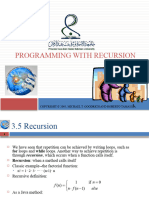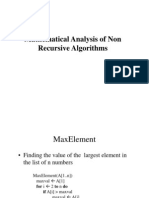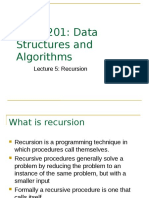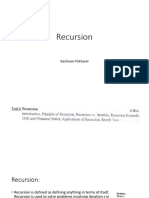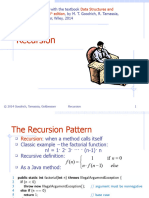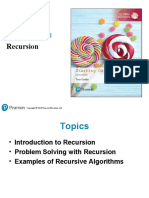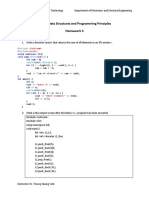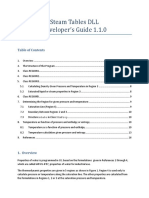0% found this document useful (0 votes)
162 views14 pagesRecursion
The document discusses recursion, which is a method of solving problems by breaking them down into smaller sub-problems and solving those sub-problems recursively until reaching a base case. It provides examples of recursively defined functions like factorials and describes properties like linear, binary, and multiple recursion. Recursive functions must have a base case to terminate the recursion and arguments that move closer to the base case with each recursive call.
Uploaded by
talha ahmadCopyright
© © All Rights Reserved
We take content rights seriously. If you suspect this is your content, claim it here.
Available Formats
Download as PPTX, PDF, TXT or read online on Scribd
0% found this document useful (0 votes)
162 views14 pagesRecursion
The document discusses recursion, which is a method of solving problems by breaking them down into smaller sub-problems and solving those sub-problems recursively until reaching a base case. It provides examples of recursively defined functions like factorials and describes properties like linear, binary, and multiple recursion. Recursive functions must have a base case to terminate the recursion and arguments that move closer to the base case with each recursive call.
Uploaded by
talha ahmadCopyright
© © All Rights Reserved
We take content rights seriously. If you suspect this is your content, claim it here.
Available Formats
Download as PPTX, PDF, TXT or read online on Scribd
/ 14


